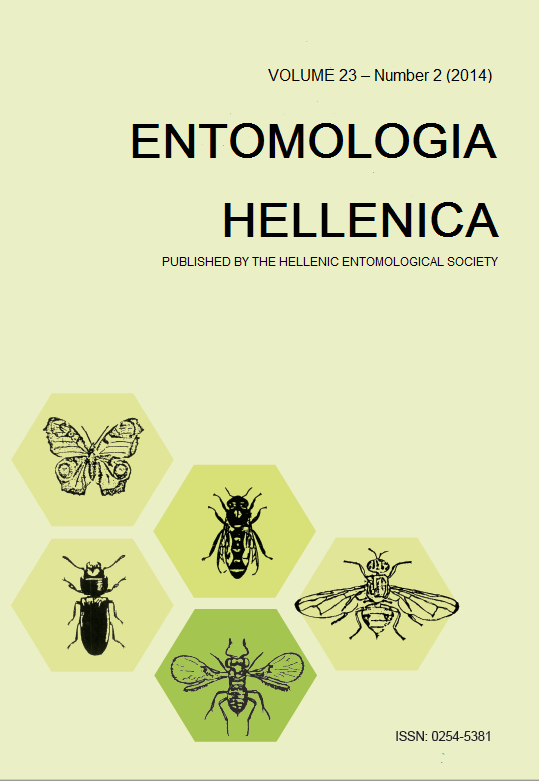Development of the parasitoid Bracon brevicornis on different larval instars (L2-L5) of the Indian meal moth Plodia interpunctella

Abstract
Bracon brevicornis (Wesmael) (Hymenoptera: Braconidae) is a gregarious parasitoid that attacks a variety of important lepidopterous pests of stored products. The aim of this study was to determine if different larval instars of Plodia interpunctella (Lepidoptera: Pyralidae) affected longevity and fecundity of parasitoid B. brevicornis. Percentage of parasitism, number of eggs laid on different larval instars of P. interpunctella, number of larvae, prepupae, pupae and the number of F2 adults of B. brevicornis as well as the developmental time of parasitoid egg, larva, prepupa, pupa and the total developmental time from egg to adult on different larval instars of the host were recorded. Our results showed that statistically significant differences were observed among the larval instars of P. interpunctella in all studied parameters. In L2 of P. interpunctella no eggs of B. brevicornis were observed. A few eggs laid on L3 but they were not developed successfully. Concerning the development of B. brevicornis on L4 and L5 instars of P. interpunctella statistically significant differences were observed between the two instars. The mean number of eggs laid by B. brevicornis on L4 of P. interpunctella per 10 days was 2.42 eggs per adult, and the mean number larvae, prepupa, pupae and adults was 1.42, 1.37, 1.26 and 1.24 respectively. The mean number of eggs laid on L5 of P. interpunctella by B. brevicornis was 13.65, while the mean number of larvae, prepupae, pupae and adults was 9.73, 7.90, 7.44 and 7.16 respectively. In all cases the differences were statistically significant. The developmental time of B. brevicornis developed on L4 instar of P. interpunctella was 1.12 days for egg, 2.03 for larva, 1.47 for prepupa, 6.82 for pupa and the total developmental time from egg to adult 11.45 days. The developmental time of B. brevicornis developed on L5 instar of P. interpunctella was 1.18 days for egg, 1.68 for larva, 1.29 for prepupa, 7.76 for pupa and the total developmental time from egg to adult 11.92 days. The female and male B. brevicornis adult life span of F1 generation was 16.70 and 11 days when developed on L4 of P. interpunctella and 28.70 and 17.60 days when developed on L5 of P. interpunctella.
Article Details
- How to Cite
-
Malesios, G. A., & Prophetou-Athanasiadou, D. A. (2014). Development of the parasitoid Bracon brevicornis on different larval instars (L2-L5) of the Indian meal moth Plodia interpunctella. ENTOMOLOGIA HELLENICA, 23(2), 59–64. https://doi.org/10.12681/eh.11537
- Issue
- Vol. 23 No. 2 (2014)
- Section
- Articles

This work is licensed under a Creative Commons Attribution-NonCommercial-ShareAlike 4.0 International License.
Authors who publish with this journal agree to the following terms:
Authors retain copyright and grant the journal right of first publication with the work simultaneously licensed under a Creative Commons 4.0 license.
Authors are able to enter into separate, additional contractual arrangements for the non-exclusive distribution of the journal's published version of the work (e.g. post it to an institutional repository or publish it in a book), with an acknowledgement of its initial publication in this journal. Authors are permitted and encouraged to post their work online (preferably in institutional repositories or on their website) prior to and during the submission process, as it can lead to productive exchanges, as well as earlier and greater citation of published work.


